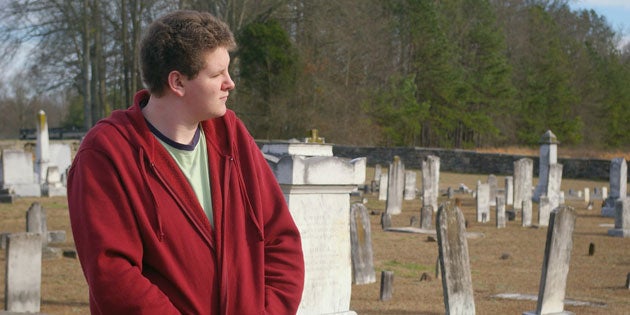Visitors to the Simpsonville Genealogical Research Room in Simpsonville, S.C., are sometimes taken aback when they make an introduction to the entity’s executive director.
After all, the research room is housed within the Simpsonville Senior Activity Center and Andrew Staton is still a fresh-faced college student.
But don’t be fooled by Staton’s youth. The College of Charleston senior is a budding historian and expert genealogist. His passion for genealogy is so strong that after he exhausted research of his own family tree as a teenager, Staton wanted to help others do the same. So he lobbied city officials to create a local history and genealogy room, which opened in January 2015, and which he staffed for most of the summer while he readied for his senior year in Charleston.
Staton’s own interest in his family history was spurred by the passing of his grandfather. Among the items Staton’s grandfather left behind were assorted family papers. Staton, who is double-majoring in history and historic preservation at the College, dug into the documents and began assembling his family tree. His research methods and dedication were so impressive that in 2013 the National Genealogical Society awarded him its Rubincam Youth Award.
When researching family history, Staton says most people hope to uncover scandal or associations with celebrities. While that sometimes occurs, he says, more often than not genealogical research can provide “an appreciation for the everyday life of most of your ancestors.”
Consider some of Staton’s discoveries about his own family:
- He has an English ancestor who wrote a famous legal book.
- He’s related to former South Carolina Gov. Coleman L. Blease and distantly related to former U.S. Presidents William Henry Harrison and Benjamin Harrison.
- U.S. Army Gen. William Westmoreland, who commanded American troops during the Vietnam War, is a distant cousin.
- His family’s surname was originally Staunton, but was shortened over the course of centuries.
Just as importantly, Staton was able to set the record straight when it came to family rumors and legends. In one case, Staton had heard about a great-great-grandfather who was such a horrible alcoholic that his daughter was once forced to pound him on the head with a frying pan. Thanks to Staton’s sleuthing, though, his great-great-grandfather’s reckless behavior could be put into context: Staton discovered that his ancestor suffered from syphilis and eventually died at South Carolina’s state mental hospital on Bull Street in Columbia, S.C.
Another legend, told in nearly every branch of Staton’s family, was that a distant relative was a “Cherokee princess.” Staton had his DNA analyzed by the genealogical service firm Ancestry.com and found no Native American lineage. In fact, he says, 95 percent of his genes can be traced to ancestors from the British Isles.
But while a subscription to Ancestry.com and DNA testing can be helpful to the amateur genealogist, Staton says neither is necessary, at least not when you’re just getting started.
Here are Staton’s 5 tips for investigating your family tree:
1. Document your existing family knowledge
Interview your family members, collect family papers and learn as much as you can from the loved ones you see and speak to on a regular basis. Staton’s research into his own family was helped tremendously by family papers kept by both sets of his grandparents. Family Bibles can often be important documents, as names of generations of family members are often inscribed on interior pages.
2. Consult some basic, free resources
By reviewing census and death records, both of which are relatively easy to find and free to the public, you can confirm information shared by relatives and also fill in holes in your research. Staton recommends free services such as FamilySearch and Find A Grave to get started.
3. Visit cemeteries
Cemeteries can provide a lot of information to genealogists, especially if one discovers a family plot. When visiting a cemetery, Staton recommends visiting the cemetery office and asking for a cemetery map and a list of persons buried. When you discover a relative’s grave, he says it’s important to look at nearby headstones, too, to determine if other relatives are nearby. In the case of neglected cemeteries, one might have to carefully clear away vegetation to learn the identities of the interred.
4. Use Facebook and other social media networks
Make friends with your extended family over Facebook and easily swap information and photos. Never has it been easier to connect with a long-lost relative and to collaborate with them as you fill in your family tree.
5. When you’re ready, consider subscribing to a genealogical company and have your DNA tested
For those who really enjoy genealogical pursuits, a subscription to Ancestry.com or similar services is a tremendous tool. DNA testing, too, can be useful, says Staton, and the cost of testing is becoming more and more affordable. Once you submit a saliva sample, you can expect results in about six weeks.






